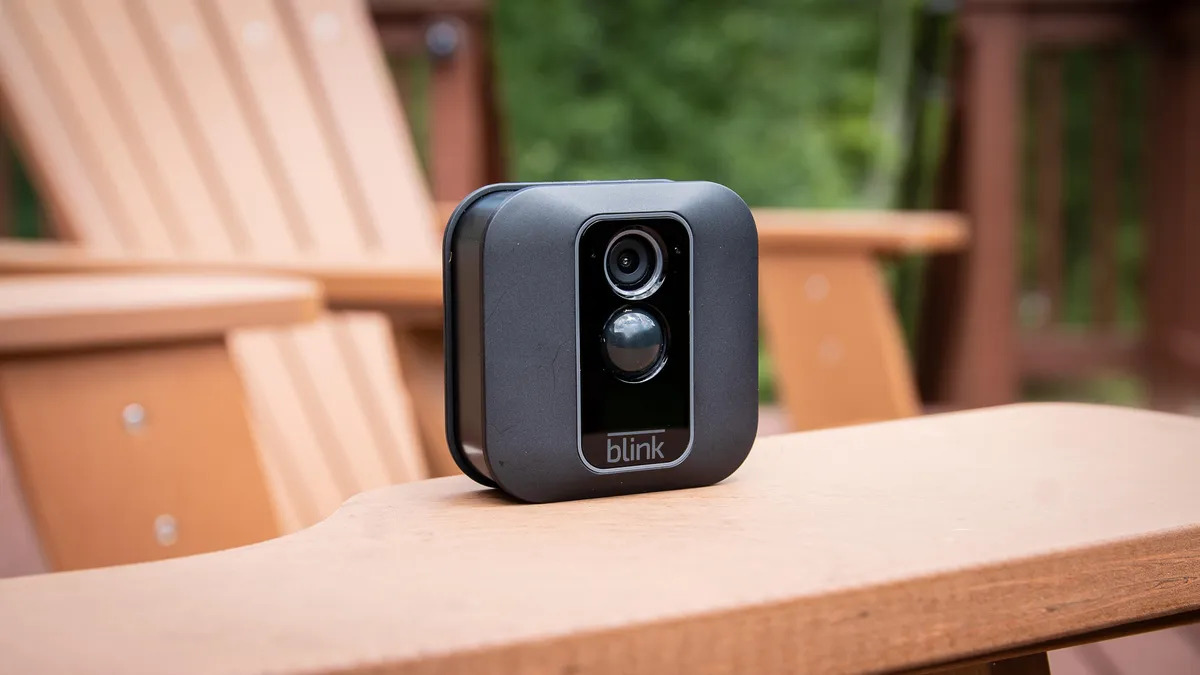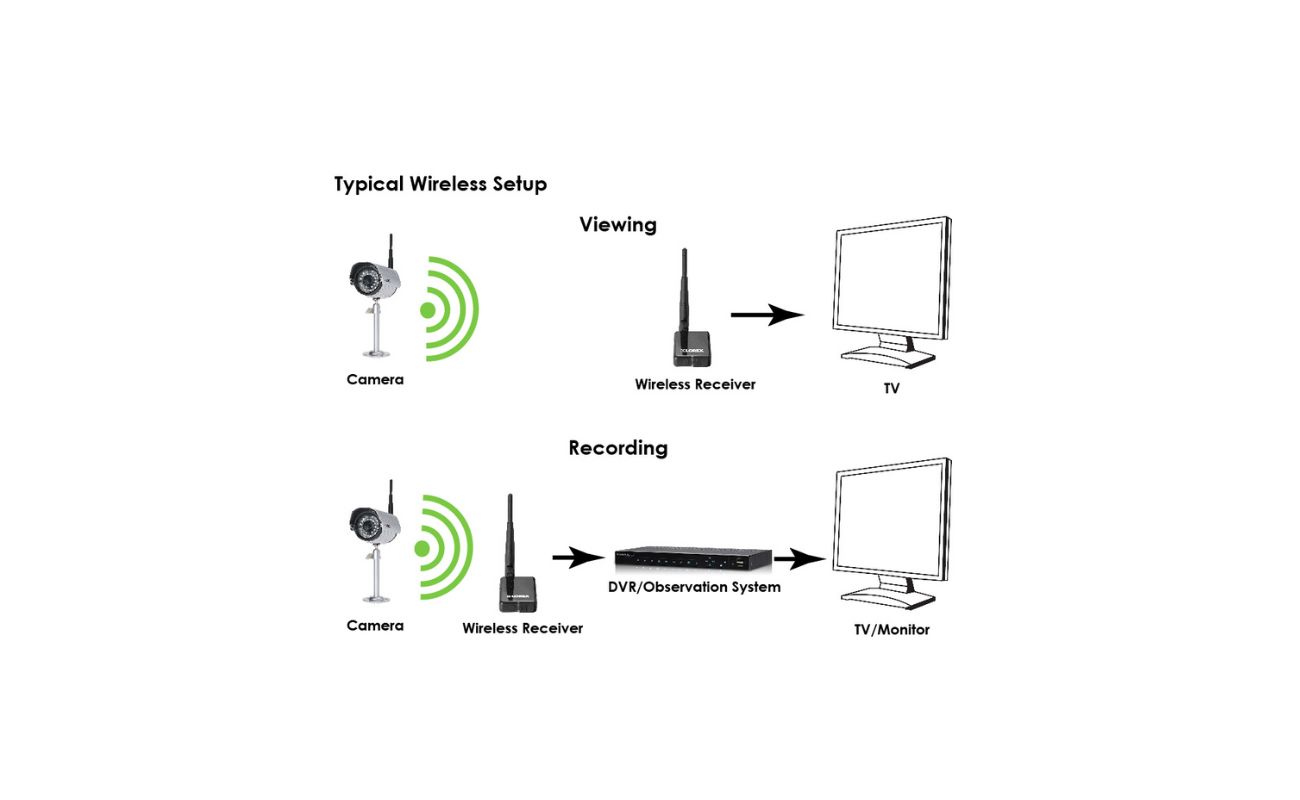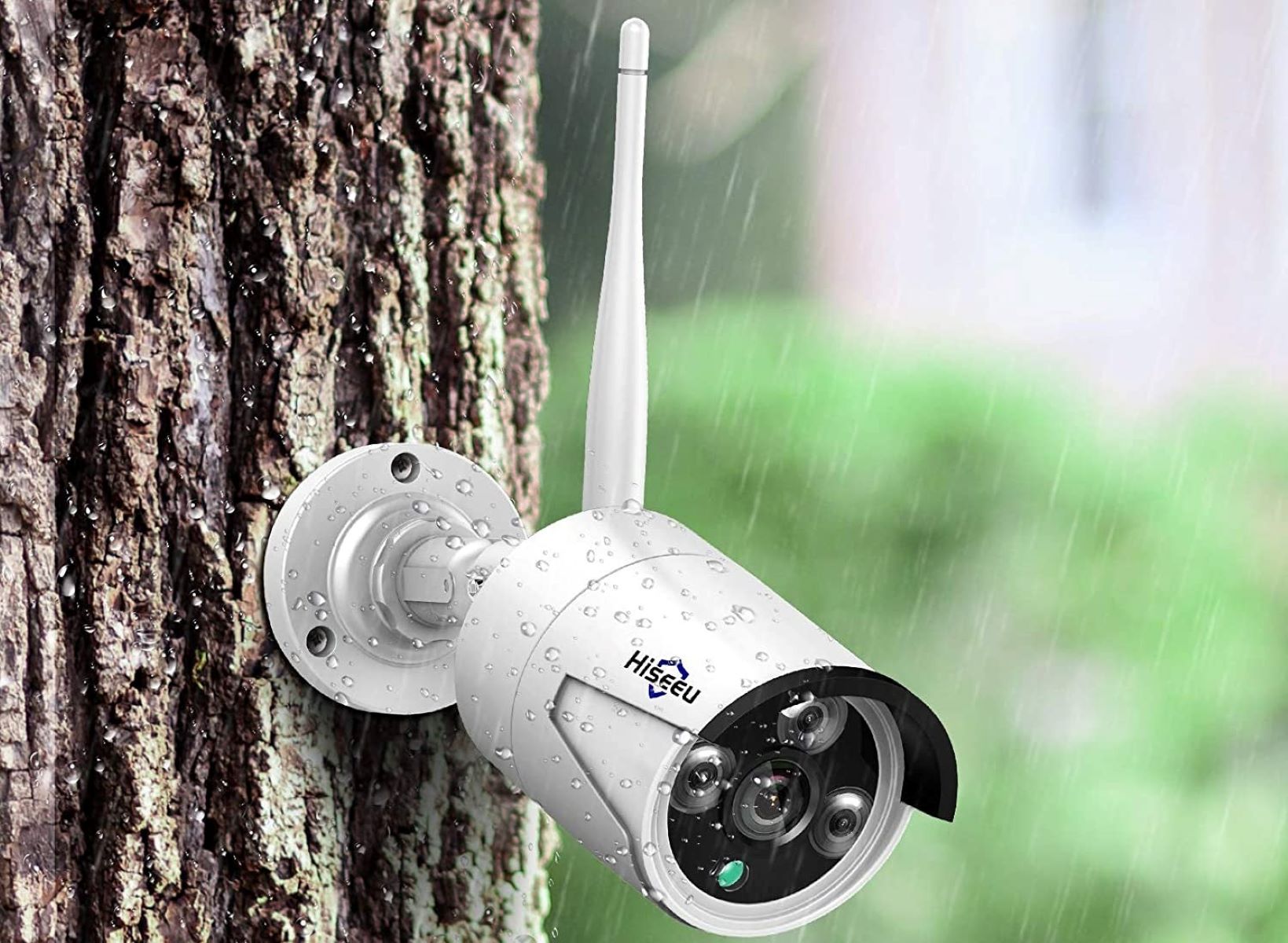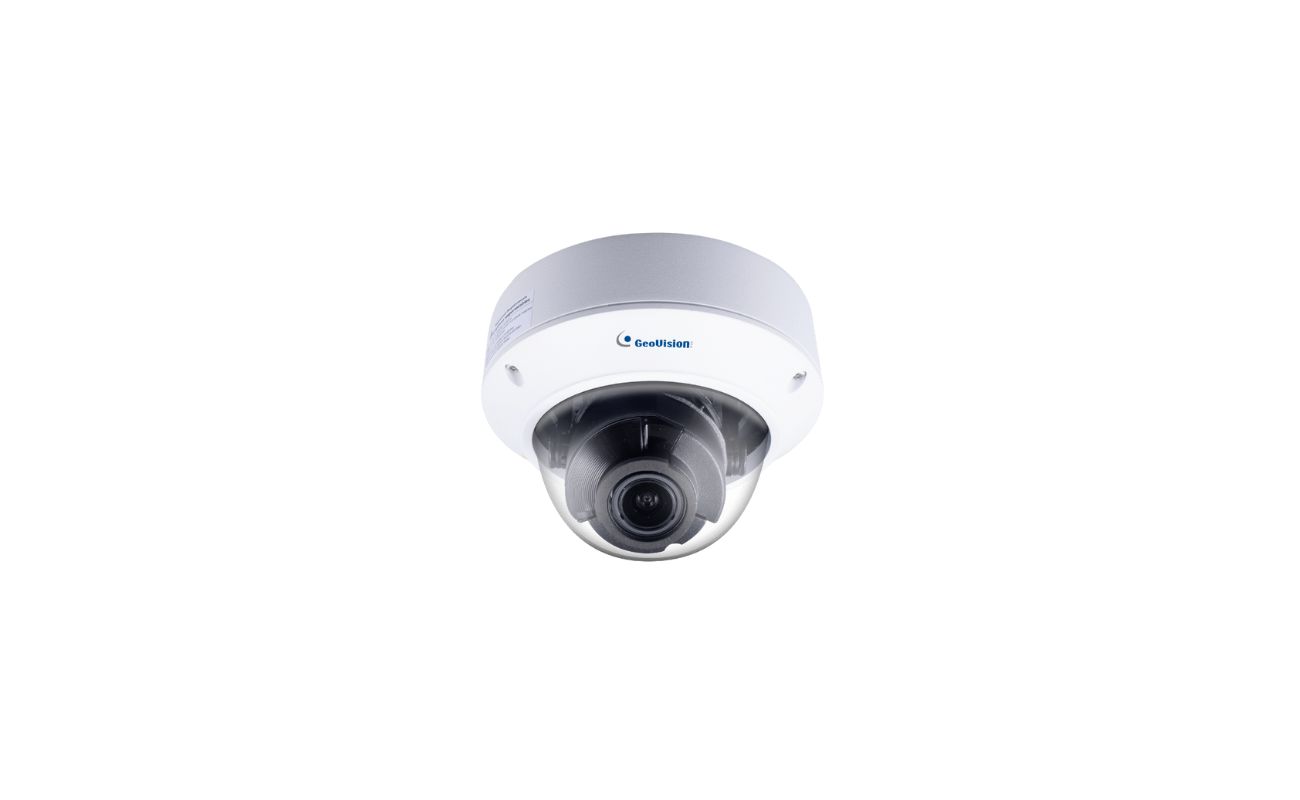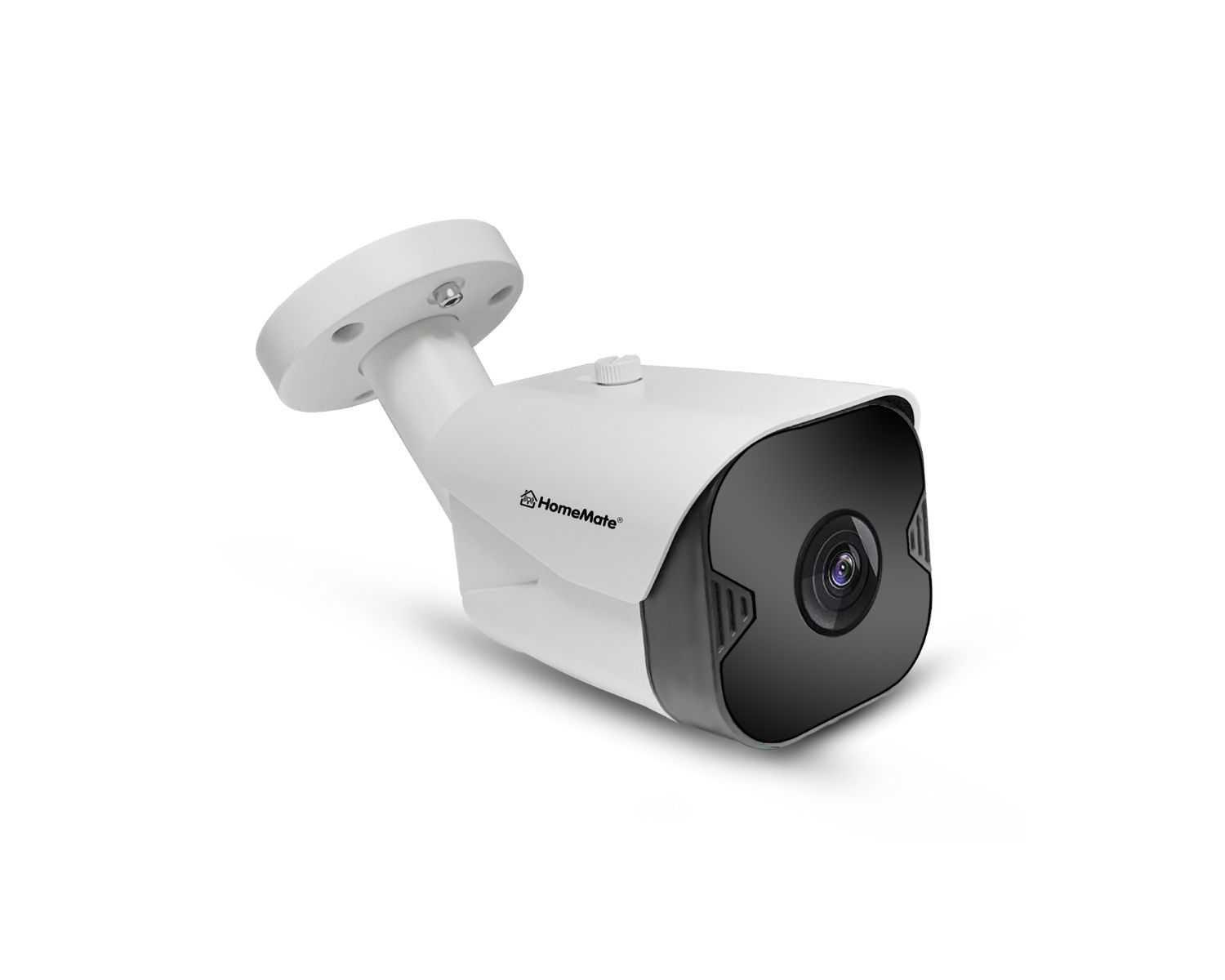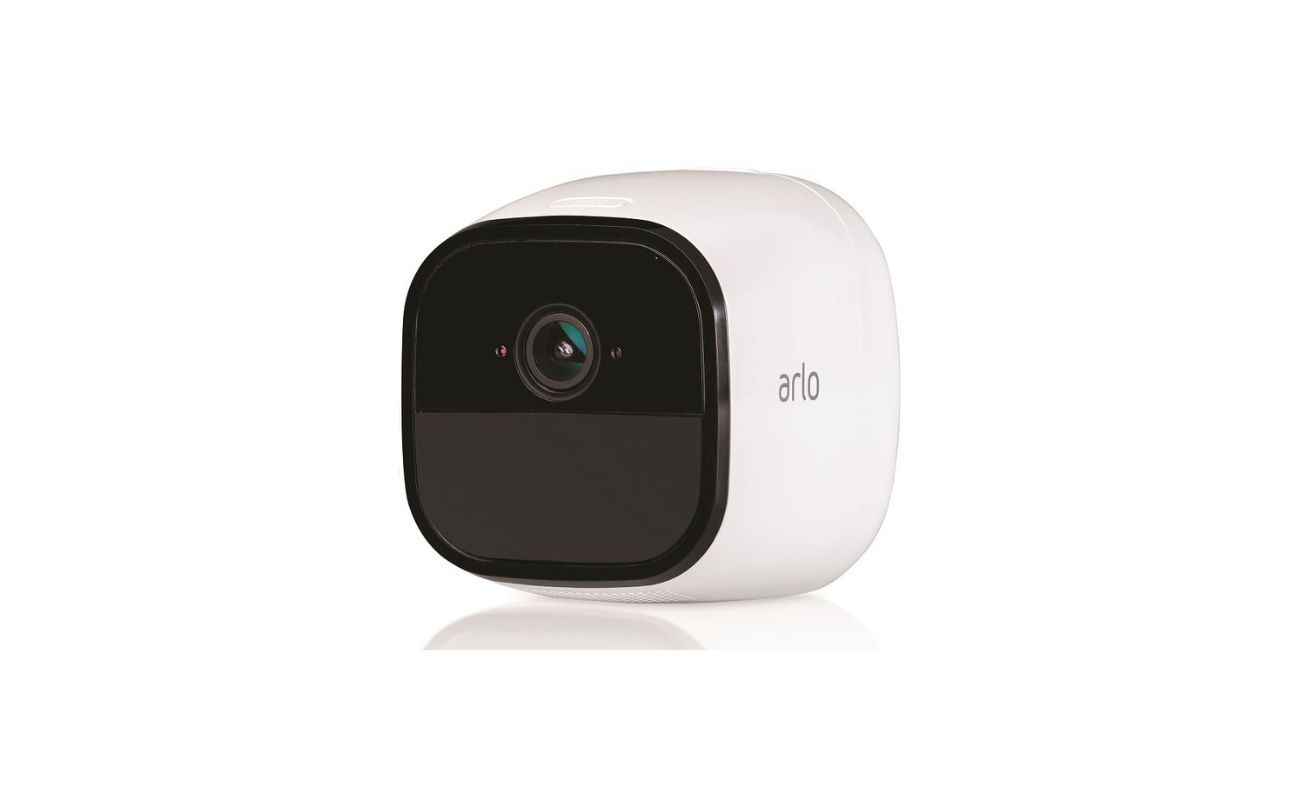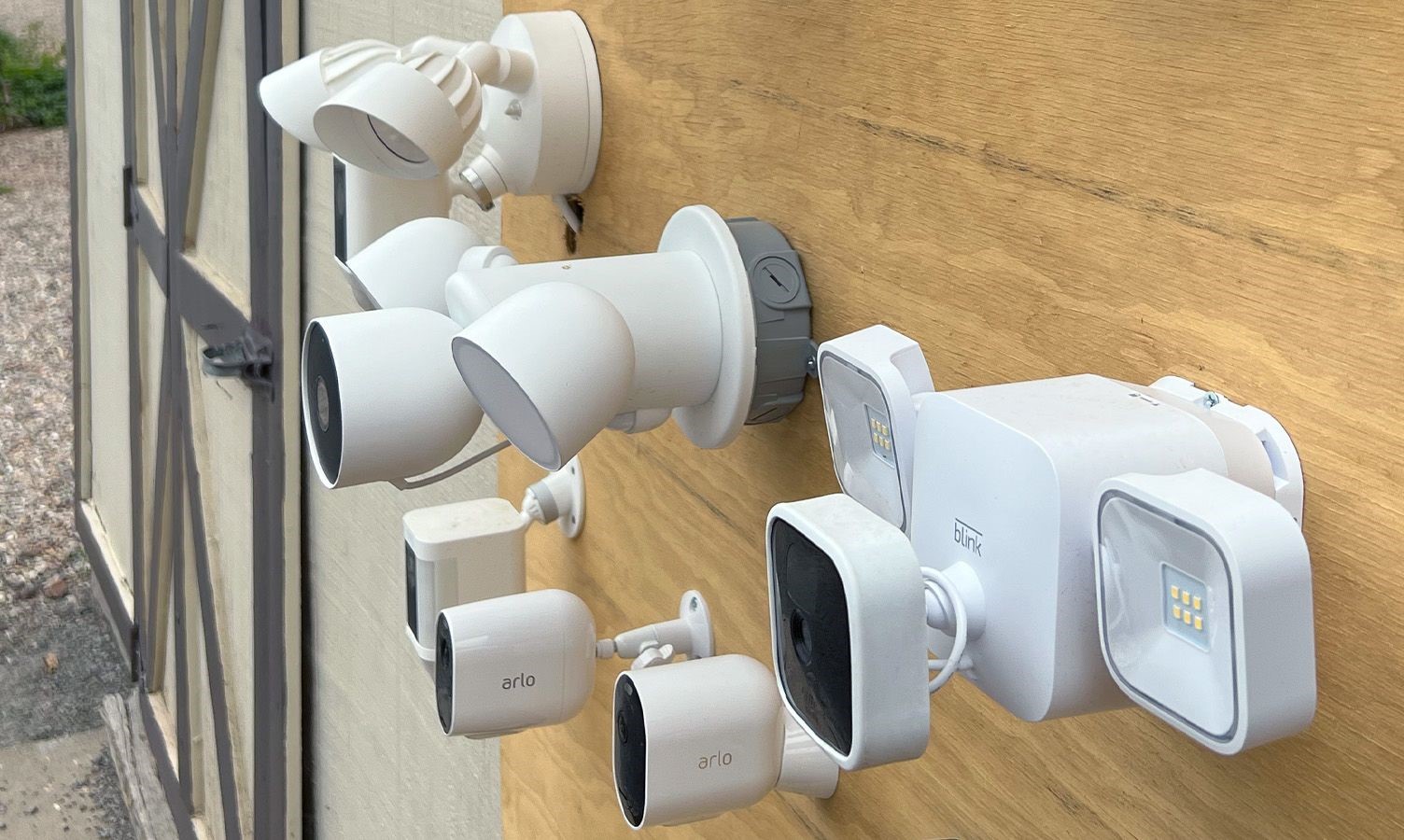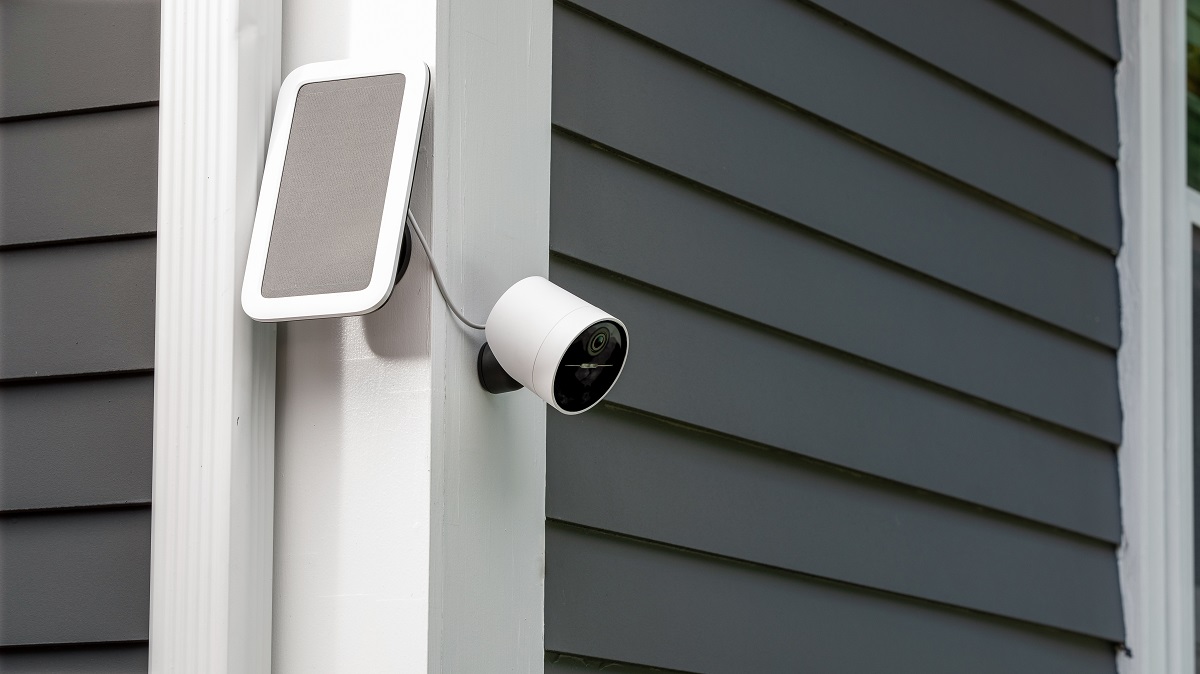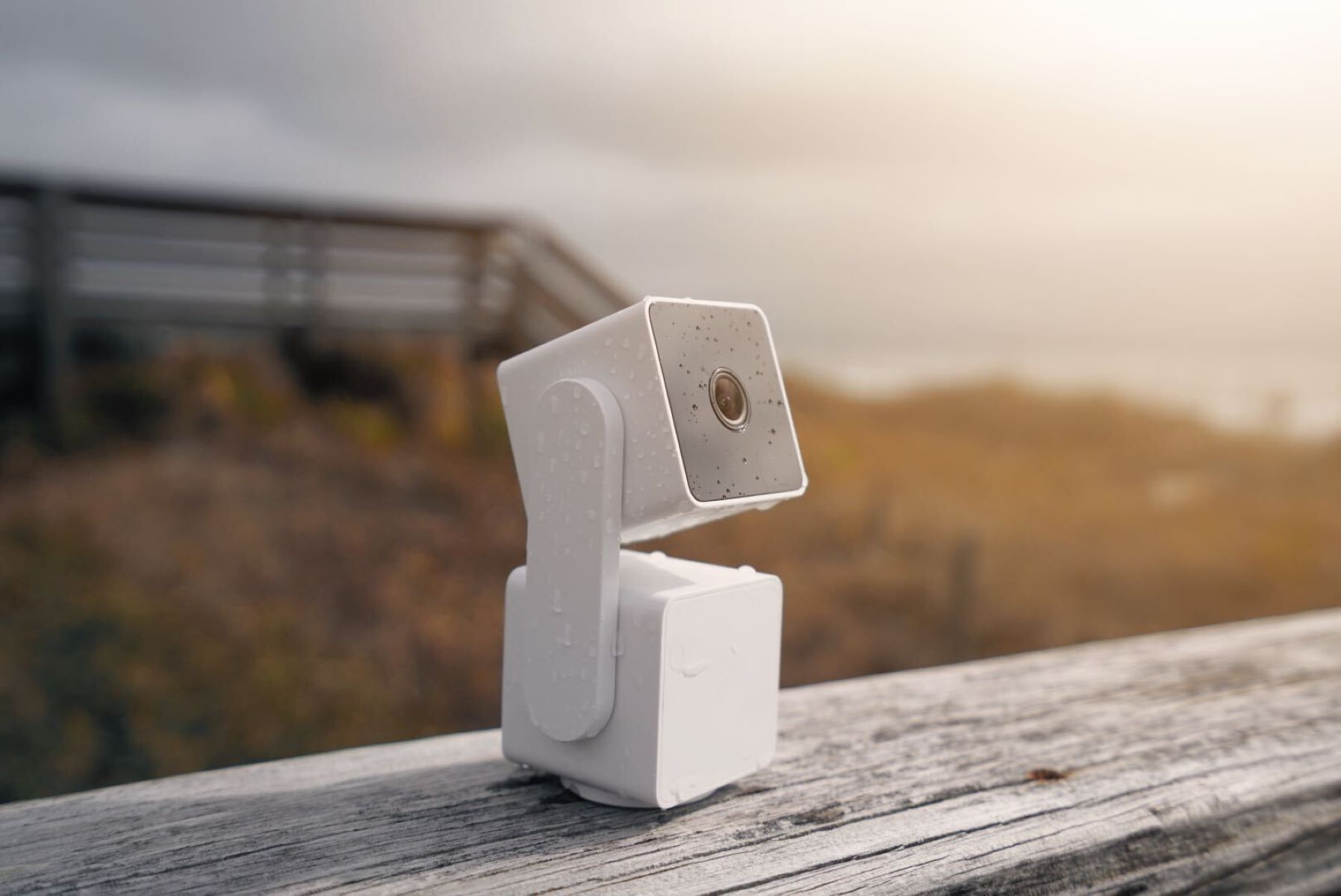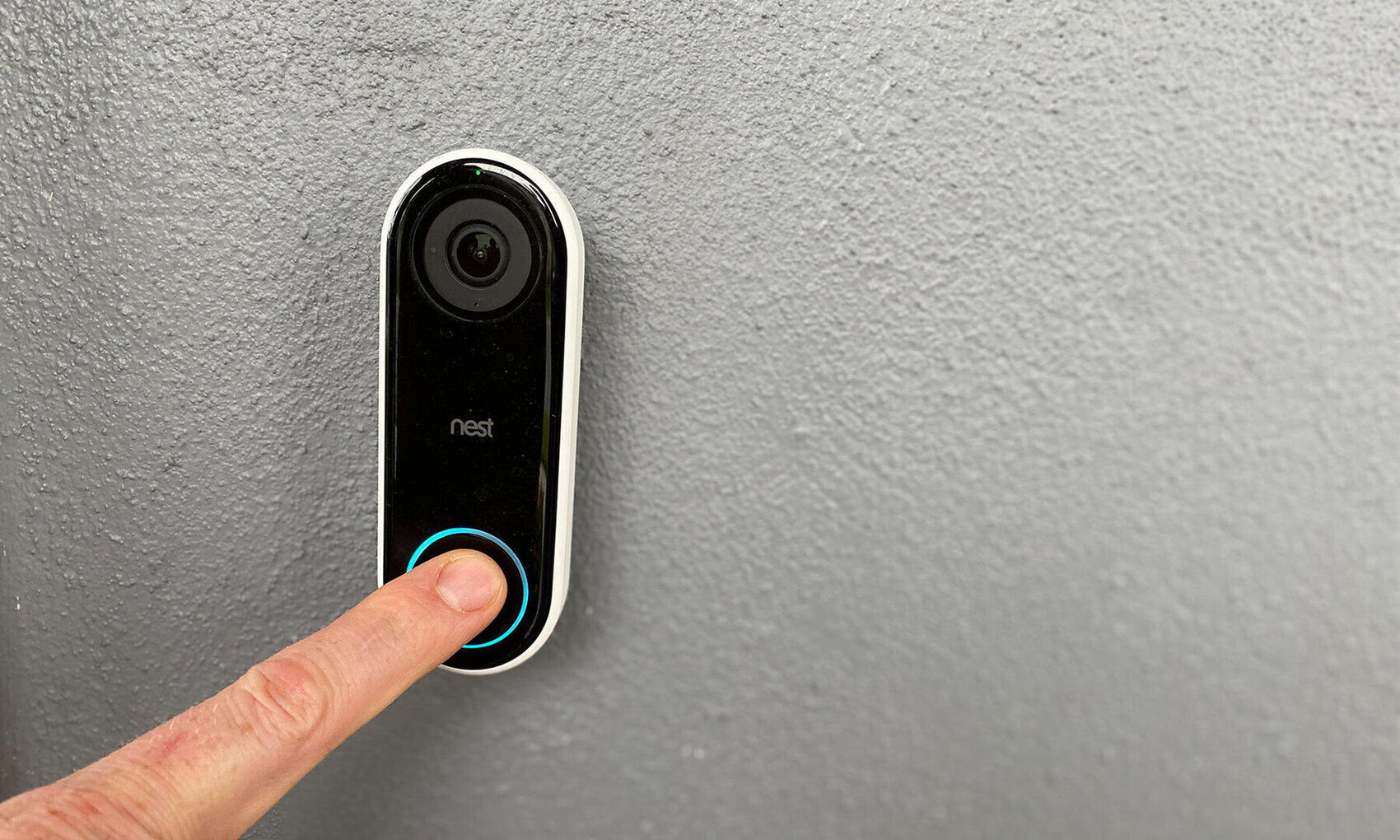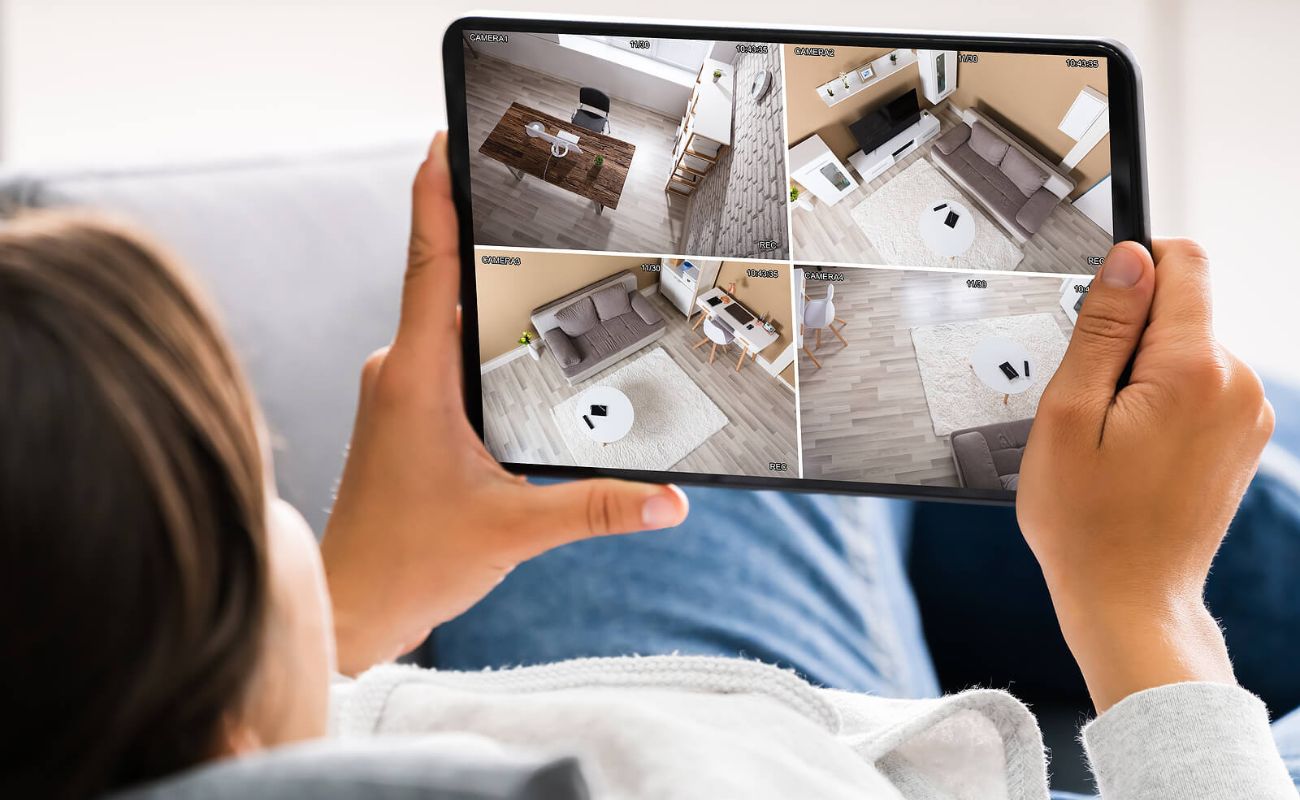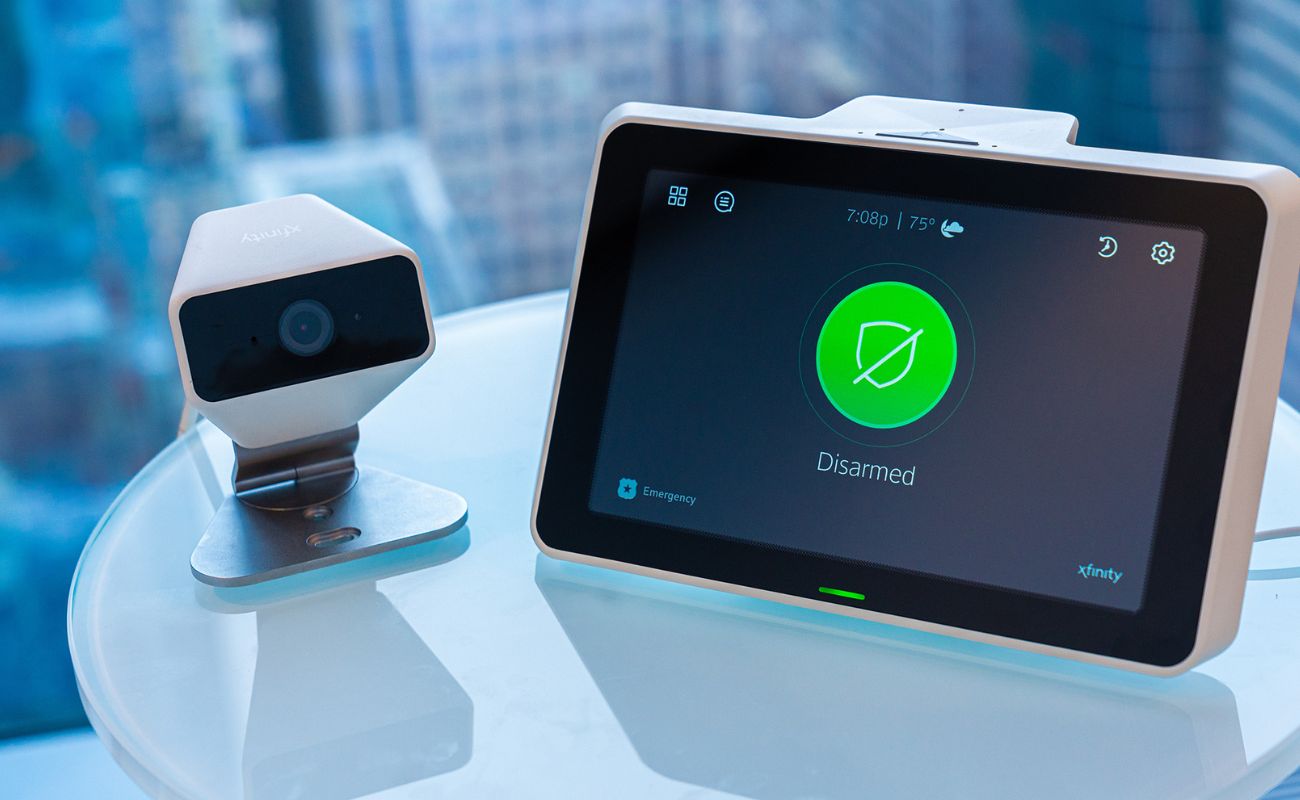Home>Home Security and Surveillance>How Do Wireless Outdoor Cameras Work
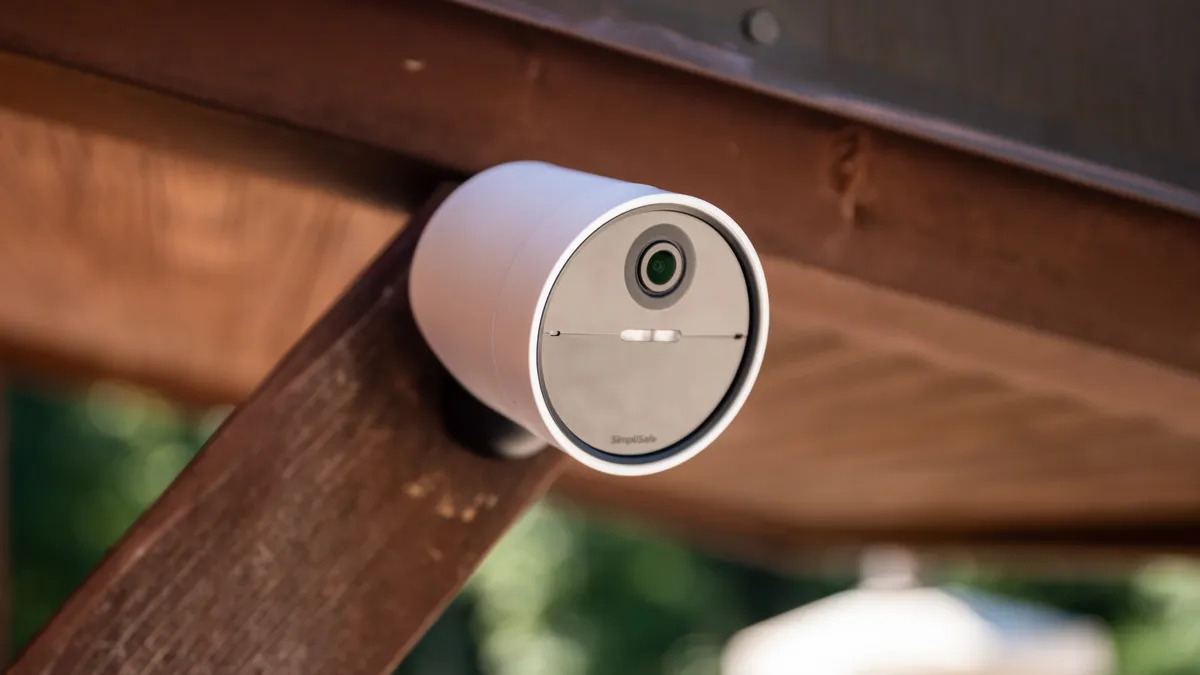

Home Security and Surveillance
How Do Wireless Outdoor Cameras Work
Modified: March 6, 2024
Learn how wireless outdoor cameras work for home security and surveillance. Explore their features and installation process to protect your property.
(Many of the links in this article redirect to a specific reviewed product. Your purchase of these products through affiliate links helps to generate commission for Storables.com, at no extra cost. Learn more)
Introduction
Welcome to the world of wireless outdoor cameras, where security and surveillance have reached new heights. In an era where home security is of utmost importance, having a reliable and effective surveillance system is essential for peace of mind. Wireless outdoor cameras have emerged as a popular choice for homeowners, offering flexibility, convenience, and advanced features to ensure the safety of your property.
Wireless outdoor cameras, as the name suggests, are security cameras that can be installed outdoors without the need for extensive wiring. These cameras use wireless technology to transmit the captured video footage, eliminating the need for complex installation processes. This makes them a great option for those who want to monitor their outdoor spaces, such as gardens, driveways, and entry points.
The benefits of using wireless outdoor cameras are numerous. Firstly, their wireless functionality allows for easy installation and setup. You can mount them anywhere within range of your wireless network, providing you with the flexibility to choose the optimal vantage points for surveillance. Additionally, wireless outdoor cameras can be easily moved or relocated as needed, making them ideal for renters or those who frequently change their surveillance setups.
In terms of functionality, wireless outdoor cameras offer a wide range of features to enhance your security measures. High-resolution cameras provide clear, detailed video footage, enabling you to identify individuals and monitor activity with ease. Many models also feature infrared night vision capabilities, allowing you to capture footage in low-light conditions or even complete darkness.
As technology advances, wireless outdoor cameras now offer various ways to access and monitor the captured footage. With the help of dedicated mobile apps, you can view live video feeds from your cameras remotely using your smartphone or tablet. This allows you to keep an eye on your property no matter where you are, providing increased peace of mind while you’re away.
With the basic understanding of wireless outdoor cameras in place, let’s delve deeper into the components that make up these surveillance systems.
Key Takeaways:
- Wireless outdoor cameras offer easy installation, flexibility, and remote access for monitoring outdoor spaces, enhancing home security and providing peace of mind.
- Consider camera resolution, night vision, weatherproofing, and power source when choosing a wireless outdoor camera to ensure it meets specific surveillance needs and overcomes potential limitations.
Read more: How Do Wireless Security Cameras Work
Understanding Wireless Outdoor Cameras
Wireless outdoor cameras are surveillance devices specifically designed for outdoor use. These cameras utilize wireless technology to transmit video footage, providing homeowners with a convenient and effective solution for monitoring their outdoor spaces.
The primary benefit of using wireless outdoor cameras is the ease of installation. Unlike traditional wired cameras, which require extensive wiring and drilling, wireless outdoor cameras can be set up with minimal effort. This is especially useful for those who are not technically inclined or do not want to deal with the complexities of a wired system.
Another advantage of wireless outdoor cameras is their flexibility. Since they do not rely on physical connections, these cameras can be placed in various locations around your property to provide optimal coverage. Whether you want to monitor your front yard, backyard, or even your driveway, wireless outdoor cameras give you the freedom to choose the best vantage points for surveillance.
Furthermore, wireless outdoor cameras offer the convenience of remote access. Many modern models come with mobile apps that allow you to view the live video feed from your cameras on your smartphone or tablet. This means you can monitor your property from anywhere with an internet connection, giving you peace of mind even when you’re not at home.
In addition to convenience, wireless outdoor cameras also provide enhanced security. The presence of visible cameras acts as a deterrent to potential intruders, reducing the risk of break-ins and theft. Moreover, in the unfortunate event of a security breach, the recorded footage from the wireless outdoor cameras can serve as valuable evidence for investigation and prosecution.
Wireless outdoor cameras are also weatherproof, designed to withstand outdoor elements such as rain, snow, and extreme temperatures. This ensures that they can continue to function effectively and reliably regardless of the weather conditions.
Overall, wireless outdoor cameras offer a host of benefits, including easy installation, flexibility, remote access, and enhanced security. Whether you want to keep an eye on your property, deter potential intruders, or simply have peace of mind, wireless outdoor cameras are an excellent investment for home security.
Components of Wireless Outdoor Cameras
Wireless outdoor cameras consist of several key components that work together to provide effective surveillance and security. Understanding these components can help you make an informed decision when choosing the right wireless outdoor camera for your needs. Here are the main components:
1. Camera unit: This is the core component of the wireless outdoor camera system. The camera unit captures video footage and usually includes features such as high-definition resolution, night vision capabilities, and motion detection. It is designed to withstand outdoor conditions and is typically weatherproof.
2. Transmission unit: The transmission unit is responsible for wirelessly transmitting the video footage captured by the camera. It uses wireless technology, such as Wi-Fi or cellular networks, to send the video data to the receiver or the monitoring device. The transmission unit ensures seamless and real-time transmission of the video feed.
3. Power supply unit: Since wireless outdoor cameras operate independently, they require a power supply to function. The power supply unit supplies electrical power to the camera and other components. Depending on the camera model, the power supply can be through traditional AC power outlets or through batteries for a completely wireless setup.
4. Receivers and monitors: To view the video footage captured by the camera, a receiver or monitor is required. The receiver receives the wireless signal transmitted by the camera and decodes it into a video feed that can be displayed on a monitor or accessed through a mobile app. Some wireless outdoor cameras also have built-in receivers or monitors for on-site viewing.
These components work in synchrony to create a seamless surveillance system that allows you to monitor and protect your outdoor spaces. The camera unit captures the video footage, which is then wirelessly transmitted by the transmission unit to the receiver or monitoring device. With the power supply unit providing the necessary power, you can view the video feed on a monitor or through a mobile app, ensuring that you have real-time access to the surveillance footage.
Understanding the components of wireless outdoor cameras is essential for choosing the right system that meets your security requirements. Consider factors such as camera resolution, transmission range, power options, and compatibility with receivers or monitors when selecting a wireless outdoor camera for your property.
Wireless Technology Used in Outdoor Cameras
Wireless outdoor cameras rely on various wireless technologies to transmit video footage and ensure seamless communication between the camera unit and the monitoring device. Let’s explore the different wireless technologies commonly used in outdoor camera systems:
1. Wi-Fi: Wi-Fi is one of the most widely used wireless technologies in outdoor cameras. It allows for high-speed data transmission and provides a reliable connection between the camera unit and the monitoring device. Wi-Fi-enabled cameras can connect to your home’s Wi-Fi network, enabling you to access the live video feed and recordings from your smartphone or computer. Wi-Fi offers a considerable range, making it suitable for monitoring larger outdoor areas.
2. Cellular networks: Some outdoor cameras utilize cellular networks to transmit video footage. These cameras have built-in SIM cards and operate similarly to mobile phones. They can connect to the internet via 3G, 4G, or even 5G networks, providing a reliable and stable connection. Cellular network-enabled cameras are ideal for remote areas or locations where Wi-Fi coverage may be limited. They offer the advantage of being able to function independently of Wi-Fi networks.
3. Bluetooth: While not as commonly used as Wi-Fi or cellular networks, Bluetooth technology can be found in certain outdoor camera systems. Bluetooth enables short-range connectivity between the camera unit and a receiver or monitoring device. It is often used for on-site viewing or configuring camera settings. Bluetooth-enabled cameras allow you to connect directly to the camera with your smartphone or tablet, providing a convenient and secure connection.
4. Zigbee: Zigbee is another wireless technology used in some outdoor camera systems. It operates on low-power radio signals and offers low-cost and low-bandwidth communication. Zigbee-enabled cameras can form a mesh network, allowing them to communicate with each other and expand the range of coverage. Zigbee is often used in smart home systems, where outdoor cameras can be integrated into a larger ecosystem of devices.
These wireless technologies play a crucial role in enabling wireless outdoor cameras to transmit video footage efficiently and securely. Whether utilizing Wi-Fi for home monitoring, cellular networks for remote locations, Bluetooth for on-site viewing, or Zigbee for smart home integration, each technology offers its benefits in terms of range, speed, and flexibility. When choosing a wireless outdoor camera, consider the wireless technology used and ensure it aligns with your specific surveillance needs and the infrastructure available in your location.
When using wireless outdoor cameras, make sure to place them within the range of your Wi-Fi signal to ensure a strong connection. Additionally, consider using a Wi-Fi extender to boost the signal if needed.
How Wireless Outdoor Cameras Work
Wireless outdoor cameras have revolutionized the way we monitor and secure our outdoor spaces. Understanding how these cameras work can provide insights into their functionality and help you make the most of their features. Here is a breakdown of the key steps involved in the operation of wireless outdoor cameras:
1. Camera captures video footage: The camera unit of a wireless outdoor camera is responsible for capturing video footage. It utilizes high-resolution sensors and lenses to record clear and detailed images of the monitored area. Modern cameras often include features such as motion detection, enabling them to activate only when activity is detected, saving storage space and preserving battery life.
2. Video data transmission: Once the camera captures the video footage, it needs to be transmitted wirelessly to a receiver or a monitoring device. The camera unit uses the built-in wireless technology, such as Wi-Fi or cellular networks, to encode and transmit the video data. This wireless transmission eliminates the need for physical connections and ensures real-time streaming of the video feed.
3. Receiving and monitoring the footage: The wireless transmission is received by a dedicated receiver connected to a monitor or a recording device. The receiver decodes the wireless signal and converts it into a video feed that can be displayed on a monitor or recorded for later viewing. Some wireless outdoor cameras also offer the option of connecting directly to a smartphone or tablet using a mobile app, allowing users to monitor the footage remotely.
4. Remote access and control: Thanks to advancements in technology, wireless outdoor cameras now offer remote access and control features. With the help of dedicated mobile apps, users can access the live video feed from their cameras remotely using smartphones or tablets. This allows homeowners to monitor their property on the go, keeping an eye on their outdoor spaces from anywhere with an internet connection. Additionally, remote access often includes the ability to control camera settings, such as adjusting the field of view or enabling motion detection.
Overall, wireless outdoor cameras work by capturing video footage, wirelessly transmitting the data to a receiver or a monitoring device, and allowing users to remotely access and monitor the footage. This seamless operation provides homeowners with increased security, convenience, and peace of mind in their outdoor spaces.
Read more: How Do Ring Outdoor Cameras Work
Factors to Consider When Choosing a Wireless Outdoor Camera
When selecting a wireless outdoor camera, it’s important to consider various factors to ensure you choose a camera that meets your specific needs and provides the desired level of security and surveillance. Here are some key factors to consider:
1. Camera resolution: The resolution of the camera determines the quality of the video footage it captures. Higher resolution cameras provide more detailed and clearer images, making it easier to identify people and objects. Look for cameras with at least 1080p resolution for optimal clarity.
2. Night vision capabilities: It’s essential to choose a wireless outdoor camera with reliable night vision capabilities. This feature enables the camera to capture clear footage even in low-light or completely dark conditions. Look for cameras with infrared (IR) LEDs that provide enhanced visibility at night.
3. Weatherproofing: Since outdoor cameras are exposed to the elements, weatherproofing is crucial. Ensure that the camera you choose has a high IP (Ingress Protection) rating, indicating its ability to withstand dust, rain, wind, and harsh temperatures. This ensures the camera’s longevity and durability in outdoor environments.
4. Motion detection features: Motion detection is a valuable feature for wireless outdoor cameras. It allows the camera to activate and start recording when motion is detected within its field of view. This helps conserve storage space and alerts you to potential intrusions or suspicious activity in real-time.
5. Connectivity options: Consider the connectivity options available with the wireless outdoor camera. Most cameras utilize Wi-Fi for wireless connectivity, but some models also offer cellular network support for areas with limited Wi-Fi coverage. Having multiple connectivity options provides flexibility in accessing and monitoring the camera’s footage.
6. Power source: Wireless outdoor cameras require a power source to operate. Some cameras are powered by traditional AC outlets, while others use batteries for a completely wire-free installation. Consider the power source options available to ensure it aligns with your preferences and the practicalities of your property.
By considering these factors, you can choose a wireless outdoor camera that meets your specific requirements and provides the necessary features for effective surveillance and security. Each factor contributes to the camera’s performance and usability, so take the time to evaluate your needs and prioritize the features that matter most to you.
Advantages and Limitations of Wireless Outdoor Cameras
Wireless outdoor cameras offer numerous advantages when it comes to home security and surveillance. However, like any technology, they do have limitations. Let’s explore the advantages and limitations of wireless outdoor cameras:
Advantages of wireless outdoor cameras:
1. Easy installation: One of the primary advantages of wireless outdoor cameras is the ease of installation. They eliminate the need for complicated wiring systems, allowing for quick and hassle-free setup. This is particularly beneficial for those who are not tech-savvy or do not want to deal with the complexities of a wired system.
2. Flexibility in placement: Wireless outdoor cameras provide the flexibility to be placed in various locations around your property. Since they do not require physical connections, you can position them at optimal vantage points to maximize the coverage area. This flexibility allows you to monitor specific areas or adjust the camera’s position as needed.
3. Remote access and monitoring: With wireless outdoor cameras, you can access the live video feed and recordings remotely on your smartphone, tablet, or computer. This provides convenient monitoring capabilities, ensuring that you can keep an eye on your property from anywhere with an internet connection.
4. Expandability: Wireless outdoor cameras are often part of a larger ecosystem of smart home devices. This allows for expandability, where you can integrate additional cameras or connect them with other security features like smart locks or motion sensors. This expandability enhances the overall security and functionality of your home.
Limitations of wireless outdoor cameras:
1. Limited range: Wireless outdoor cameras rely on the strength and range of the wireless signal. If your camera is located far away from your Wi-Fi router or the cellular network is weak in your area, it may result in a reduced signal quality and potential connectivity issues.
2. Interference: Wireless signals can be susceptible to interference from various sources, including other electronic devices, physical barriers, and environmental factors. Interference can disrupt the signal transmission and affect the camera’s performance, leading to lag, video quality degradation, or intermittent connectivity.
3. Power source: Wireless outdoor cameras require a power source to operate. Depending on the camera model and configuration, this power source can be traditional AC outlets or batteries. Battery-powered cameras may require more frequent charging or battery replacement compared to wired cameras, which can be a inconvenience for some users.
4. Bandwidth limitations: Streaming live video feeds and accessing recordings from wireless outdoor cameras consume bandwidth. If you have multiple cameras or other devices connected to your network, it can put a strain on your internet bandwidth, potentially affecting the speed and performance of other online activities.
Understanding the advantages and limitations of wireless outdoor cameras can help you make an informed decision about incorporating them into your home security system. By considering these factors, you can assess whether wireless outdoor cameras align with your specific needs and requirements.
Conclusion
Wireless outdoor cameras have transformed the way we monitor and secure our outdoor spaces. With their ease of installation, flexibility, and advanced features, these cameras offer a convenient and effective solution for home security and surveillance.
By utilizing wireless technology, wireless outdoor cameras eliminate the need for complex wiring systems, making installation a breeze. They provide the flexibility to position them at optimal locations within the wireless network range, ensuring comprehensive coverage of your outdoor areas.
The ability to remotely access and monitor the live video feed from these cameras is a game-changer. With dedicated mobile apps, you can keep an eye on your property from anywhere, providing peace of mind whether you’re at work or on vacation.
When choosing a wireless outdoor camera, it’s important to consider factors such as camera resolution, night vision capabilities, weatherproofing, motion detection features, connectivity options, and power sources. These factors contribute to the camera’s performance and suitability for your specific needs.
Wireless outdoor cameras offer several advantages, including easy installation, flexibility, remote access, and expandability. They enhance your home security by acting as a deterrent to potential intruders and providing valuable video footage for investigation purposes.
However, wireless outdoor cameras do have some limitations, such as limited range, potential interference issues, power source considerations, and bandwidth limitations. It’s crucial to be aware of these limitations and evaluate them against your requirements to ensure that a wireless outdoor camera is the right fit for your home.
In conclusion, wireless outdoor cameras provide a powerful and convenient solution for monitoring and securing your outdoor spaces. With their advanced features, remote access capabilities, and ease of installation, they offer an effective way to enhance your home security and gain peace of mind.
Carefully consider your specific needs and the factors discussed in this article to choose a wireless outdoor camera that aligns with your requirements. By doing so, you can create a robust surveillance system that keeps your property safe and secure.
Frequently Asked Questions about How Do Wireless Outdoor Cameras Work
Was this page helpful?
At Storables.com, we guarantee accurate and reliable information. Our content, validated by Expert Board Contributors, is crafted following stringent Editorial Policies. We're committed to providing you with well-researched, expert-backed insights for all your informational needs.
